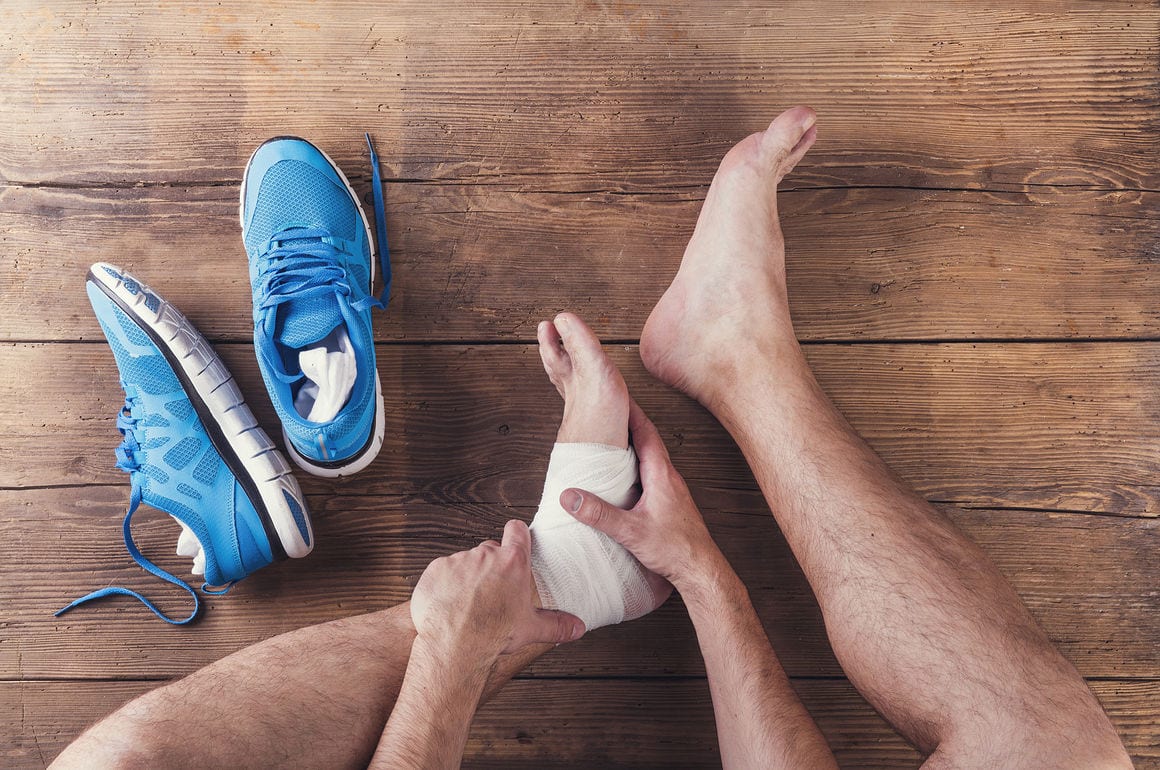Is splintering, burning heel pain accompanying your first steps out of bed in the morning? You’re not alone. Heel pain from plantar fasciitis makes up anywhere from 11 to 15% of the foot problems for which adults seek medical treatment according to a 2012 report in the Journal of Research in Medical Sciences.
What is Plantar Fasciitis?
To understand plantar fasciitis and how it is caused, you need to have a basic grasp of the biomechanics of the feet. Each foot has over 20 bones, over 30 joints, and over 100 connective tendons, ligaments, and muscles. One of the primary connective tissues is a long, fibrous band of tough ligament that runs the bottom of the foot and connects the heel to the toes. This is called the plantar fascia.
When the plantar fascia becomes strained, inflamed or incurs microscopic tears, this can result in mild to severe pain in the heel and arch of the foot. Accompanying stiffness and irritation can sideline your sports hobby or workout routine quickly.
What are Risk Factors for Plantar Fasciitis?
The plantar fascia ligament is responsible for supporting the arch of your foot as it absorbs the shock from walking, running, standing, etc. Each impact the heel makes with the ground when you are physically active is followed by disbursement of weight to the forefoot and cascading shock up the leg. A strained and swollen plantar fascia becomes weak and less able to do its job successfully.
Being overweight
Just like with your knee joints, the foot and especially the plantar fascia are more prone to strain and damage the more weight you carry. Keeping extra fat around your midsection can also imperceptibly draw your center of gravity forward, altering your gait and potentially your pronation. Even a small change in the way your foot impacts the ground and rolls outward slightly to absorb the shock can place added stress on the plantar fascia and lead to injury.
Bad footwear
What qualifies as bad footwear? Essentially any footwear that negatively impacts your pronation and causes your foot to roll inward or outward more than it should would be considered bad footwear. Worn out running shoes, for example, can have the inside or outside of the sole worn down with time, offering you less arch support and causing you to stress critical muscles and ligaments like the plantar fascia or the Achilles tendon. Extended wear of spikes or racing flats like you find with track and field athletes may also precipitate plantar fasciitis symptoms.
Prolong Standing on Hard Surfaces
Do you have a job like being a teller at a bank or working at a hair salon which requires you to stand or walk on hard surfaces all day? Do you only run on roads? If so, you could be at higher risk of developing plantar fasciitis. When you walk, your arch collapses slightly and is looking for a little give or flexibility from your walking surface to help mitigate the impact. A hard surface that is made of concrete or asphalt, for example, wears feet out quicker, leading to foot fatigue, weakness, and pain.
Tight Calf Muscles
Most often, high or flat arches, predispose someone to potentially incurring the soft tissue inflammation associated with plantar fasciitis. Combined with tight calf muscles, and it’s almost guaranteed. Why? Restricted calf muscles actually limit the range of motion of the ankle joint. That lack of flexibility cascades into extra strain on the plantar fascia, preventing it from stretching and instead causing it to pull away from the heel bone.
Treating Plantar Fasciitis
Luckily, plantar fasciitis sufferers rarely have to worry about invasive procedures to fix the problem. Instead, a handful of at-home steps can help limit pain and prevent plantar fasciitis from worsening or returning. Best practices include:
Calf/Foot Stretching – Increasing the pliability of your calf muscle not only helps it be more limber and better support the leg and foot, but it reduces some of the stress on the ankle and improves joint mobility. This can keep your pronation healthy and your plantar fascia free of strain. For a list of top foot stretchers click here.
Cold therapy – applying an ice pack or rolling your foot over a frozen water bottle can help provide a cool relief to swollen foot tissues. The cold sensation from an ice pack can numb the nerve endings sending pain signals back to the brain, as well as restrict blood flow to temporarily relieve inflammation. Try cold therapy after a long day on your feet or after a steady run.
Self-massage, over-the-counter anti-inflammatories, orthotic aids like arch supports, night splinting, and physical therapy to strengthen feet muscles can also play an important role in overcoming plantar fasciitis and preventing future cases.








